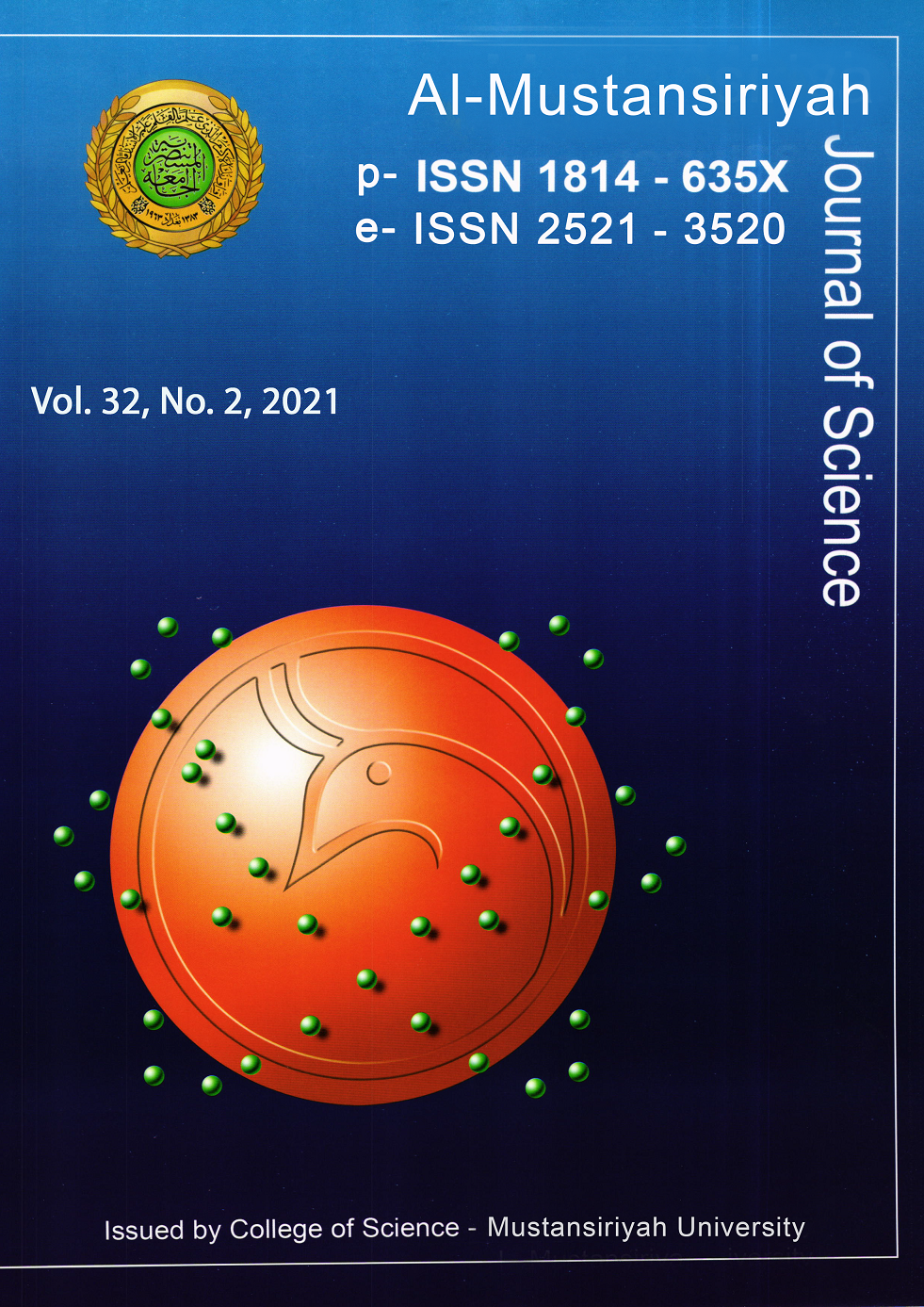Rainwater Harvesting Using GIS Technique: A Case Study of Diyala Governorate, Iraq
DOI:
https://doi.org/10.23851/mjs.v32i2.990Keywords:
Rainwater harvesting, Digital Elevation Model (DEM), Suitability map, Normalized Difference Vegetation Index (NDVI), land use, GIS, Diyala.Abstract
To improve the management of water resources in Iraq, there are several methods, including the use of rainwater harvesting techniques. In this study, the Digital Elevation Model (DEM) and Landsat satellite imagery were used under the GIS environment to identify the suitable zones for rainwater harvesting. The accomplishment of rainwater harvesting systems strongly depends on their technical designing and identifying the suitable sites. Six criteria have been used to identify the rainwater harvesting sites in the Diyala governorate. The procedure of identifying the suitable sites for rainwater harvesting was applied twice for the Diyala governorate. Firstly, it was applied by using the criteria of rainfall, slope, stream order, distance to roads, and land use, and secondly, rainfall, slope, stream order, distance to roads, and Normalized Difference Vegetation Index (NDVI) criteria were used for this purpose. As a result, the study area was divided into three suitability zones: low, moderate, and high according to the specific criteria that were used to identify the rainwater harvesting suitable sites. It was found that in the application of land use criterion the low suitability zone represents 26%, 58% represents the moderate, and 16% for the high suitability zone, while in the method of NDVI it was found that 29% represents the zone that has low suitability, 57% represents the moderate, and 14% represents the high suitability zone. The compared results led to conclude that the land use is the most influential criterion for identifying the rainwater harvesting suitability sites and found that most of the Eastern parts of Diyala governorate are promising areas for rainwater harvesting and ArcGIS is a very useful, time-saving, and cost-effective tool for identifying the rainwater harvesting suitable sites.Downloads
References
Food and Agriculture Organization of the United Nations (FAO), Country profile - Iraq, 2008.
N. Al-Ansari, M. Abdellatif, S.S. Ali, and S. Knutsson, Long term effect of climate change on rainfall in northwest Iraq. Central European Journal of Engineering, 2014. 4(3): p. 1-14.
N. Al-Ansari, M. Ezz-Aldeen, S. Knutsson, and S. Zakaria, Water harvesting and reservoir optimization in selected areas of south Sinjar Mountain, Iraq. J. Hydrologic Engineering, 2013. 18(12): p. 1607-1616.
N.A. Al-Ansari, Management of Water Resources in Iraq: perspectives and prognosis. Engineering, 2013. 5(8): p. 667-684.
A. Adham, M. Riksen, M. Ouessar, R. Abed, and C. Ritsema, Development of Methodology for Existing Rainwater Harvesting Assessment in (semi-)Arid Regions. In Water and Land Security in Dry Lands. Springer International Publishing: Cham, Switzerland, 2017. pp. 171-184.
R. Al-Adamat, S. AlAyyash, H. Al-Amoush, O. Al-Meshan, Z. Rawajfih, A. Shdeifat, A. Al-Harahsheh, and M. Al-Farajat, The Combination of Indigenous Knowledge and Geo-Informatics for Water Harvesting Siting in the Jordanian Badia. J. Geographic Information System, 2012. 4(4): p. 366-376.
F.H. Buraihi and A.M. Shariff, Selection of rainwater harvesting sites by using remote sensing and GIS techniques: a case study of Kirkuk, Iraq. J. Teknologi, 2015. 76(15): p. 75-81.
K.A. Ali, Geospatial Hydrological Analysis in GIS Environment for Selecting Potential Water Harvest Sites: The case of Badrah-Wasit. J. University of Babylon, Engineering Sciences, 2018. 26(2).
G.R.F. Ibrahim, A. Rasul, A.A. Hamid, Z.F. Ali, and A.A. Dewana, Suitable site selection for rainwater harvesting and storage case study using Dohuk Governorate. Water, 2019. p. 11-864.
Food and Agriculture Organization of the United Nations (FAO), Land and water digital media series, 26. Training course on RWH (CDROM). Planning of water harvesting schemes, unit22. Rome: Food and Agriculture Organization of the United Nations, FAO, 2003.
G. de Winnaar, G.P.W. Jewitt, and M. Horan, A GIS-based approach for identifying potential runoff harvesting sites in the Thukela River basin, South Africa. Physics and Chemistry of the Earth, 2007. 32: p.1058-1067.
W. Critchley, K. Siegert, and C. Chapman, Water harvesting, a manual guide for the design and construction of water harvesting schemes for plant production. FAO, Rome. 1991.
T.M. Lillesand, R.W. Kiefer, and WJ. Chipman, Remote sensing and image interpretation. John Wiley & Sons, 2014, Chichester, UK.
Downloads
Key Dates
Received
Accepted
Published
Issue
Section
License
Copyright (c) 2021 Al-Mustansiriyah Journal of Science

This work is licensed under a Creative Commons Attribution 4.0 International License.
(Starting May 5, 2024) Authors retain copyright and grant the journal right of first publication with the work simultaneously licensed under a Creative Commons Attribution (CC-BY) 4.0 License that allows others to share the work with an acknowledgement of the work’s authorship and initial publication in this journal.






















